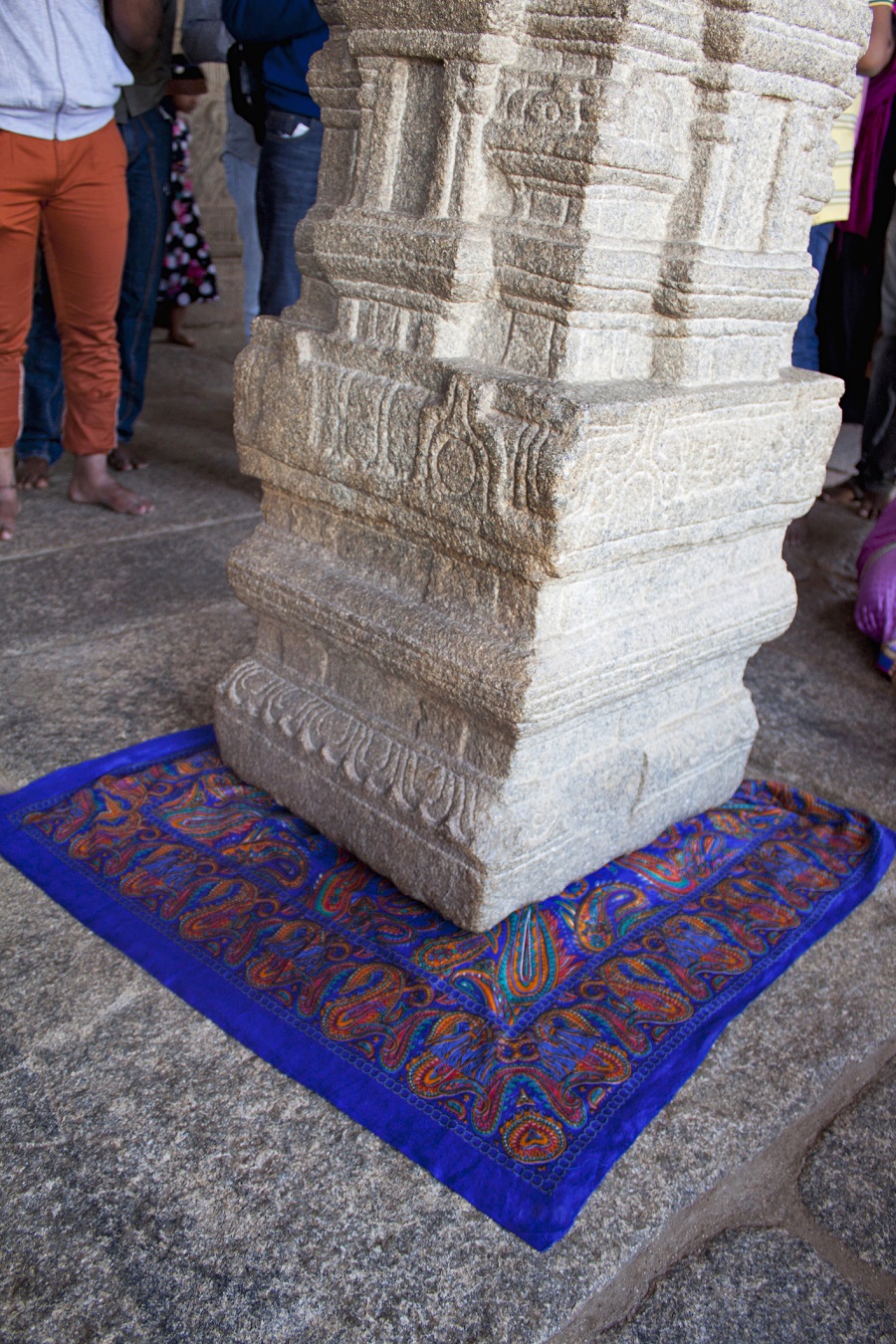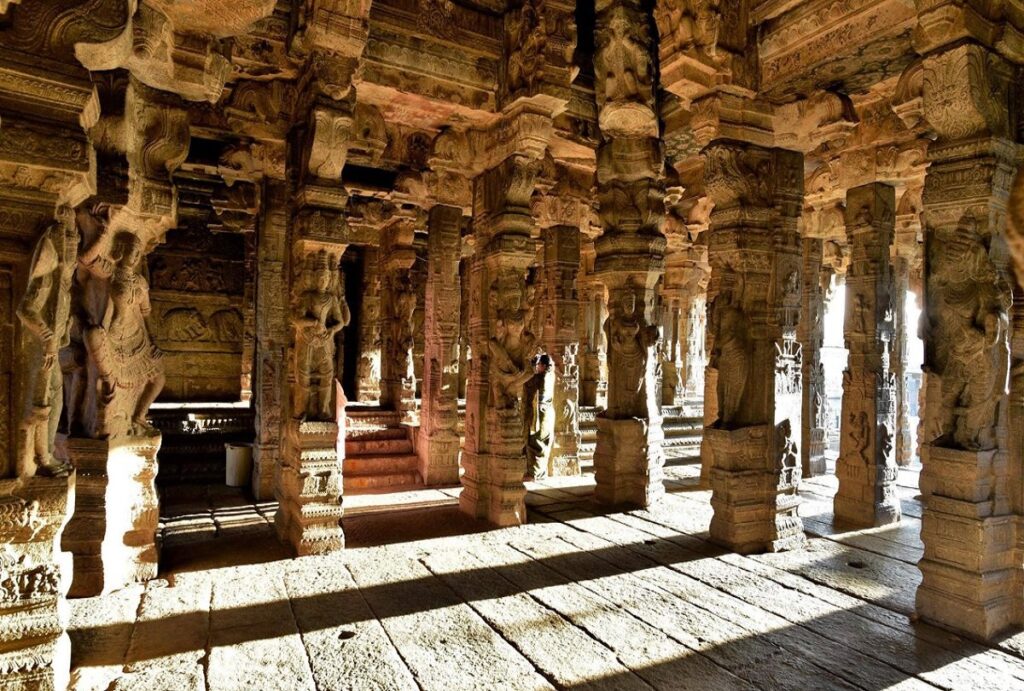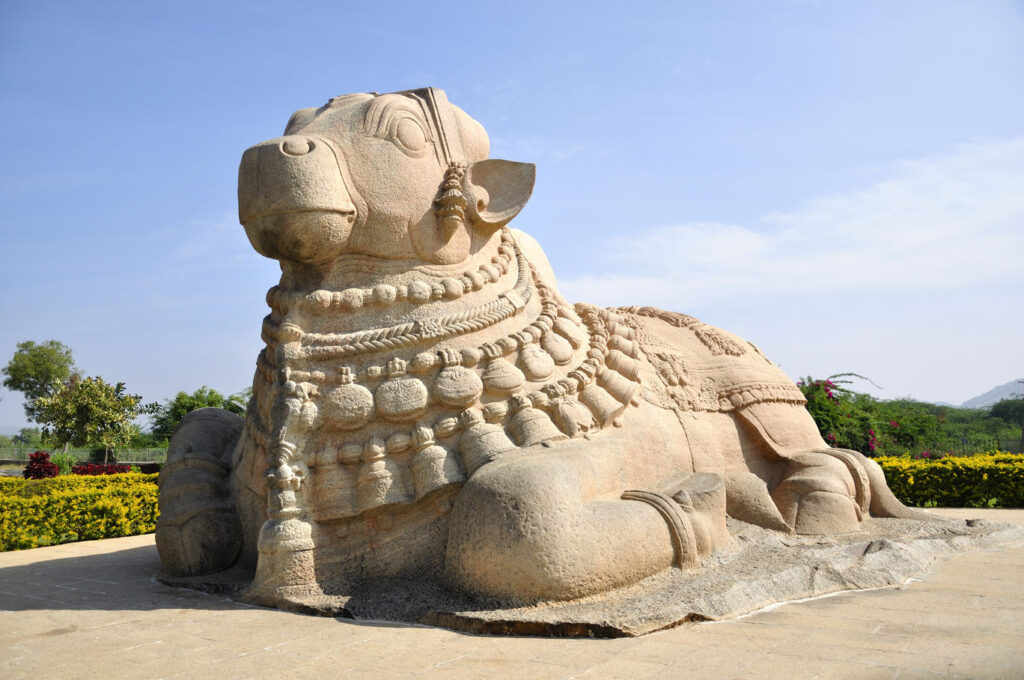
Lepakshi is a small village located 14 kms near Hindupura town of Anantapur district. It is very close to Bengaluru thus easily accessible by State Transport. The village is famous for incredibly beautiful Lepakshi Temple also known as the Temple of Hanging Pillar.
How the name Lepakshi came?
While traveling around India, we come across many holy places where the events of the Ramayana took place, and when we visit them, they are awe-inspiring and spiritually fulfilling. One such place is the Lepakshi Temple in Andhra Pradesh.
In the Aranya Kanda of Valmiki Ramayana, the incident of kidnapping Sita Devi by the demon Ravana is vividly described. I am sure you must have read it too. When Mother Sita was alone, Ravana kidnapped her. In the absence of her husband Lord Ramachandra and Lakshmana, there was no one to save her from the clutches of evil Ravana.
But her piteous wailing was heard by a gentleman Jatayu who rushed immediately to face Ravana and save Mother Sita. Jatayu was an eagle, the son of Kashyapa Muni and the brother of Sampati.
Jatayu although old by age, ferociously fought Ravana perching him from all the sides. The fight was such that Ravana’s chariot was thrashed to pieces and Ravana was forced to stand on the ground and fight with Jatayu. However, implying his deceitful tactics during the battle, Ravana managed the chop the wing of Jatayu and defeated him till death.
Jatayu was helpless but waited for Lord Rama before shedding away his mortal coils. When Rama and Lakshmana returned after killing Maricha they were shocked to see Mother Sita missing. After searching for a while, they found Jatayu in death bed who narrated the entire incident of Ravana kidnapping away Mother Sita.
In the transcendental lap of Lord Ramachandra Jatayu breathed his last. Lord Rama performed the funeral of Jatayu and offered him liberation. He sighed ‘Ley Pakshi’ – rise O bird to My abode. Thus, the name Lepakshi.
The sacred town Lepakshi is dotted with Veerabhadra Temple commonly known as Lepakshi Temple. The sthala-purana of the temple, points that is the place where Jatayu moksha had taken place.
History of Lepakshi Temple
Lepakshi temple is dedicated to Lord Veerabhadra Swamy. The temple is famous and magnificent. It was built in mid-15th-16th century by Virupanna, the treasurer of the royal state Penukonda under Vijayanagar King Achyutaraya.
Initially there was a rock (shaped like tortoise) called Kurmagiri, the Lepakshi temple is built on top of this rock. Originally the temple had seven prakaras and now only three are left; other prakaras were destroyed in attacks by Islamists.
There is a huge statue of Lord Ganesha about six feet high on a rock in the second prakara. After having the darshan of Lord Ganesha, Lord Veerabhadra Swamy is worshipped. Nearby there is a sculpture of Jeda (spider), Beddarkanappa, Snake and Elephant – doing pooja to Kalahasteshwara linga.
The main deity of this temple is Sri Veerabhadra Swamy, and it is family deity of Sri Virupanna. In the sanctum sanctorum along with Veerabhadra Swamy there are sculptures of Vaastu Purusha, Padmini Stree, Gajasura Samhara Shiva, Natya Ganapathi and Durga Devi etc on the pillars.
On the ceiling of the garbha-griha there is twenty-four feet long, fourteen feet wide painting of Sri Veerabhadra Swamy.
A deity of Goddess Durga Devi is carved on one of the pillars. While carving the sculpture, the goddess conveyed the message to the devotees that she would reside in this pillar and all the pooja must be performed to this pillar. Even today the goddess is worshiped in the pillar itself.
Distinctive Architecture of Lepakshi temple
This is a marvellously rare temple. There are many special features to see and appreciate. It is an art gallery filled with super excellent sculptors. The Natya mantapa is made of seventy pillars; on twelve pillars in the centre of the mantapa, Rambha is dancing. Lord Dattatreya, Shiva, Parvati, Surya, Tumburu, Riteshwara, Nandi, Brahma, Nataraja, Chandra, Sanatana, etc. and other devatas holding different musical instruments are intricately carved. In the front of Rambha, three-legged, horse tusked, horse eyed, plaited hair Natyacharya Bhrungi, is engraved.

In the north-eastern corner of this mantapa, there is an eight feet pillar, known as hanging pillar. It is a wonder that it does not touch the ground. To confirm this, everyone inserts the cloth at the bottom of the pillar. During the British rule, a British engineer named Hamilton went to inspect the pillar. He moved this pillar causing some damage to the mantapa. The design on the corner of pillars have been used on sarees since a long time.
Another specialty of this mantapa is the sculpture of Shiva begging alms. Shiva who had come to inspect Parvathi Devi in the form of a beggar. His clothes are seen slipping. And undisturbed Parvathi is donating alms. This is a very beautiful and rare sculptor.
There are several paintings in the canopy of the mantapa, one of them is a picture of cute Balakrishna. The peculiarity of this painting is that no matter from whichever direction we see, Krishna’s eyes always look at us.
Outside the temple, on a rock one can see the carving of a huge seven-hooded serpent under which there is a Shivalinga. The chief sculptor carved this statue in a short span of time, while his mother delayed in cooking food for him. As soon as his mother’s vision fell on this sculpture it cracked.
If we go further, there is a Kalyana mantapa of Parvati and Shiva, which is incomplete. Here there are incidents carved from the marriage ceremony of Parvathi Devi and Lord Shiva. Some opponents of Virupanna complained to the king about the unnecessary expenditure on temple construction.
The King ordered to remove Virupanna’s eyes. But being confident of his work, Virupanna himself removed his eyes and throwed them. Even today one can see the mark of his eyes on the stone.
A little further from here, there is the insignia of Sita Devi’s right feet. It is always having water gusting from the thumb part of the feet. This footprint is huge in size. Some of them are in the strong opinion that it is the feet of Bhakta Hanuman.
The most beautiful and the largest Nandi statue in India can be seen in Lepakshi Temple. In fact, this Nandi statue is carved out from a single rock. It is embellished with anklets, bells, and other stunning jewels. Initially Nandi statue was situated opposite to the Shivalinga. Later during the attacks, it was moved half kilometer away from the temple.

Lepakshi Temple is a treasure trove of many incidents from Ramayana. It is worth a single day tour from Bengaluru.
Lepakshi Temple Timings
Lepakshi Temple is open throughout the year every day from morning 6:00 AM to evening 6:00 PM
How to reach Lepakshi Temple
The best way to reach temple is to join Tirtha Yatra and get your tour organised.
By Road: Lepakshi temple is 122 kms from Bengaluru town. Road transport can be easily availed. Regular bus services are available from Bengaluru to Hindupura and then take an auto to reach the temple.
By Rail: Hindupura railway station is the nearest railway station. It is well-connected with the important towns of India.
By Air: The nearest airport is at Bengaluru. Private taxies are available from this airport location.
0










Leave a Reply